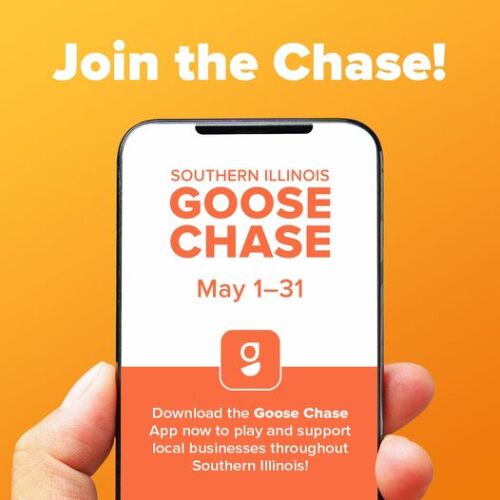Pre-screenings give audience a voice in Big Muddy
October 24, 2013
Students, faculty and film lovers had the opportunity Friday and Saturday to preview one of the region’s biggest cultural events.
Big Muddy Film Festival pre-screenings featured more than 300 films. The selections were judged and selected based on four categories: narrative, documentary, experimental and animation.
Anyone who attended the viewings could vote on what films should be shown at the main event — an effort that encourages Big Muddy to be community-driven, Nick Nylen, a graduate assistant and Big Muddy co-coordinator, said.
Advertisement
“Even though we’re part of a group that sort of organizes the festival, I think this is sort of one of those things that brings the students as a whole and the community at large into the festival,” Nylen said.
The films ranged from two-minute shorts to two-hour features. For a movie to be considered for the main event, it needed to be unambiguous in its message and offer a strong vision and film style.
“The first thing is a good story with solid writing, good dialogue and a nice ending. But we also look at other things such as cinematography, sound and acting,” Elisa Herrmann, Big Muddy Director and Film Alternatives faculty advisor, said.
Graduate assistant and Big Muddy co-coordinator Mickey Everett said contestants are encouraged to break the conventions of standard filmmaking and to step outside the boundaries while also recognizing the film or film styles that have come before them and those that are being used today.
The films offered variety and each presented its own dynamic in an attempt to convince the viewer to believe in the themes.
“Goodbye Gauley Mountain: An Ecosexual Love Story” is an hour-long environmental documentary about a lesbian couple who rally against mountaintop removal mining by expressing their love for the environment through sensuality. The couple hugs the tree of the mountains; they bathe in the Gauley’s rivers and cry fowl of the sludge left behind after the mining.
Also featured was “Fluffystein” — a loveable 12-minute narrative about a possessed stuffed toy bunny. The filmmakers use the technique of stop-motion animation to bring the crazed toy to life.
Advertisement*
“Master Cleanse” plays upon the elusiveness of cults. A guy tries to win the affection of a hippie living in a Brooklyn commune who is on “the master cleanse;” the cleanse has nothing to do with the juice diet that’s supposed to clear your system.
A special award is given to the best film that highlights a social issue — whether it is political, social or ecological — in a major way. The John Michaels Award is named after a former student who admired using film to promote a social topic that demands exposure.
Last year’s winner was “Around Crab Orchard,” a documentary by filmmaker Sarah Kanouse, that challenges the contradictions the wildlife refuge’s statement that it’s “a unique place to experience nature” despite it being engrossed by industry.
Although SIU students are not allowed to enter the festival because of potential conflicts of interest, the pre-screenings and the festival could inspire them. Sarah Lewison, a professor of video production in the Department of Mass Communications, said the films expose the students and public to styles they wouldn’t find on TV or Netflix.
“I think that at the best the festival awakens people’s dreams, maybe secrets, maybe things that they believe in but they feel they’re isolated and that nobody else really believes in those things,” Lewison said.
She teaches students to activate their eyes and senses so they can recognize the complexity of the world.
“I think the hardest thing is when you, in this day, with the accessibility of tools for looking at the world with cameras on their phones is to actually start to imagine the world inside the world,” she said. “Where is the edge of that frame when you’re looking and how does moving the camera, the frame or the lens a few inches over tell a whole other kind of story?”
The Big Muddy co-coordinators also see the opportunities the festival offers. Everett said he hopes to see some filmmakers who are new to the profession enter the festival.
“I think one of the big reasons why this festival exists is because—from the bottom up—it gives an opportunity and a platform for filmmakers to actually show their work,” Everett said. “I guess something that I would like to see is someone who is just starting out; they might not have the financial backings to really run it or the type of connections to do some things that a lot of these other filmmakers are doing — but I’m hoping to see just more independent filmmakers that are really just trying.”
Nylen said he hopes those who are successful at the film festival help other filmmakers in turn.
“Hopefully the whole system kind of perpetuates itself, these people who were cultivated by this small festival circuit and have found success then hand everything off to the next crop of filmmakers,” Nylen said.
Former contestants have had their films featured in the Sundance Film Festival. Past participant Joe Swanberg released the movie “Drinking Buddies,” which he wrote and directed, earlier this year.
The Big Muddy Film Festival Executive and Planning Committee soon will announce the three jurors chosen to judge the 36th annual event. Past jurors have included Jim Jarmusch, Robert Frank and Don Hertzfeldt, all of whom have enjoyed past success on the independent film circuit.
The last round of pre-screenings will be Nov. 23 through 24 and will feature more films before the Big Muddy Film Festival, which runs Feb. 18 through 23.
Advertisement







